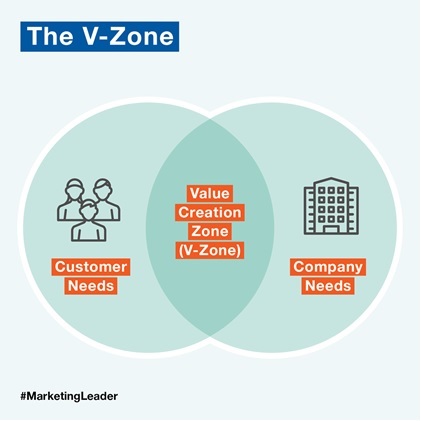Today’s Marketing Leaders
Today, many marketing leaders report that they are having less impact and are not satisfied in their jobs. That may be somewhat surprising since marketing methods and capabilities are in the midst of exciting changes and the opportunities are like never before.
Thomas Barta, a former McKinsey Partner, and Patrick Barwise, Emeritus Professor of Management and Marketing at London Business School, just conducted the most extensive research ever on what drives marketers’ business impact and career success. What drives impact? What does it take to thrive in marketing today? With data spanning 170 countries and over 8,600 leaders, Thomas and Paddy distilled the results into what it really takes to drive customer and company value.
Thomas and Paddy recently shared more with me about their new book, The 12 Powers of A Marketing Leader: How to Succeed by Building Customer and Company Value, and the extensive research behind their findings.
Your research revealed that most senior marketers aren’t satisfied with their career paths. Why not? What’s different for them than they expected?
 That’s right. Only 44% of marketers are satisfied with their careers—and in the 360-degree data, marketers’ bosses, when comparing the career success of all their direct reports, put them last. We think there are two reasons. First, as customer experts, they likely think they should have more influence on key business decisions rather than being limited to decisions on advertising and promotion. Recent research by Frank Germann, Peter Ebbs and Rajdeep Grewal shows that they’re right: having a CMO in the C-suite and having an influential marketing department do help companies become more customer-focused, increasing business performance. Secondly, they lack job security. While average S&P 500 CEO tenure is six years plus, average US CMO tenure is only four years and possibly decreasing: search firm Spencer Stuart recently reported it was down to forty-four months in 2015.
That’s right. Only 44% of marketers are satisfied with their careers—and in the 360-degree data, marketers’ bosses, when comparing the career success of all their direct reports, put them last. We think there are two reasons. First, as customer experts, they likely think they should have more influence on key business decisions rather than being limited to decisions on advertising and promotion. Recent research by Frank Germann, Peter Ebbs and Rajdeep Grewal shows that they’re right: having a CMO in the C-suite and having an influential marketing department do help companies become more customer-focused, increasing business performance. Secondly, they lack job security. While average S&P 500 CEO tenure is six years plus, average US CMO tenure is only four years and possibly decreasing: search firm Spencer Stuart recently reported it was down to forty-four months in 2015.
Balance Leadership and Functional Skills
You say that leadership skills matter more than technical marketing skills. I passionately agree. Is there a certain time when this matters more in a career? How do marketers balance the constant need to stay up with new technologies with the need to learn leadership skills?
Leading marketing isn’t the same as doing marketing, and many marketers underinvest in leadership skills.
As a junior marketer, most of your effort will inevitably go into becoming excellent in the particular technical area you’re working on. As you become more senior, you have to achieve more through other people. But at all stages, it’s important to keep developing your broader business and leadership skills.
Our evidence is that many, perhaps most, senior marketers are getting so sucked into the ever-changing technical issues that they lose sight of the bigger picture and the need to build and mobilize a great team, keep it aligned around the CEO’s agenda, spend time with their non-marketing colleagues who mainly determine the quality of the customer experience, and so on.

As a senior marketer, you should aim to be a leader of leaders. You need enough understanding of the latest technical developments to hire the best people, mobilize them, align them with the strategy, and constructively challenge them when necessary. But your main role isn’t to try to keep fully up to speed on the technicalities (an impossible task); it’s to ensure that, as a group, the team contributes as much as possible to the development and execution of the strategy. Crucially, that includes mobilizing your boss and your non-marketing colleagues as well as your team (and yourself).
Functional skills and leadership skills matter. Getting the balance right is a big challenge, but really important for both marketing and the company.
Take a 360 Degree View of Leadership
You distill your findings into 12 traits that drive success, and you put them in 4 categories (boss, colleagues, team, yourself). That’s basically an internal 360 degree view from where you sit in an organization. What are some of the symptoms that demonstrate you have it wrong, e.g., you’re focusing too much on the boss and not enough on the team or otherwise have your balance out of whack?
That’s exactly right about the 360 degree view. Our beef with most work on leadership is that it’s only about managing your subordinates and perhaps yourself. But most leaders – in fact, everyone up to CXO level – also need to manage their relationships with their colleagues and bosses. The traditional picture of leadership is incomplete except for perhaps the CEO – and even the CEO is accountable to the chairman and the board.
The main way in which senior marketers get this balance wrong is by spending most of their time inside the marketing department managing the team’s activities rather than walking the halls to energize everyone around the customer agenda. The symptoms are that non-marketers in these companies will likely say: “Marketing is a silo,” while the marketers will refer to themselves as something like “the coloring-in department” – that is, limited to advertising and promotion, with little influence on the company’s products, prices, distribution, service support, etc.
The 12 Powers of a Marketing Leader
- Tackle only big issues
- Deliver returns, no matter what
- Work only with the best
- Hit the head and the heart
- Walk the halls
- You go first
- Get the mix right
- Cover them in trust
- Let the outcomes speak
- Fall in love with your world
- Know how you inspire
- Aim higher
Cover Them With Trust
I appreciate your chapter Cover Them with Trust. Talk about trust – what steps should a leader take to build trust?

To build trust within the team, leaders need to go beyond professionalism (knowing a lot, being reliable, and so on) and our key recommendation to get people to “ask for forgiveness, not permission.” People like strong leaders who trust them and genuinely listen to their ideas and concerns, but they also want to know the real person behind the business leader. That’s why, at times, it’s critical to be willing to show weakness, too. Michelle Peluso, former CEO of online shopping site Gilt, for example, shared her own 360-degree assessments with her team and asked for help. You can’t put a value on that. Conversely, having and showing a big ego destroys trust. So make your corner office the team room. Praise people. Take one for the team at times.
The 4 Most Important Powers
Of the 12 powers of a marketing leader, which ones are the most significant?
Overall, the four most important powers are: Tackle big issues (make sure that what you work on increases the value creation zone or ‘V-Zone’ – the overlap between customers’ needs and the company’s needs), Walk the Halls (spend time away from your desk to mobilize your non-marketing colleagues), Get the Mix Right (build a team with the right mix of analytical, creative and leadership skills to deliver your specific strategy), and Fall in Love with your World (know your stuff about your customers, market and products). If you improve in just these four areas, you’ll almost certainly be a more effective and successful marketing leader.
Often we enter research with certain assumptions or guesses about what the results will say. What most surprised you about the findings?
We were surprised that personality made so little difference to senior marketers’ business impact and career success. This means that almost any competent marketer has it within themselves to become an effective and successful marketing leader – if they develop the required leadership skills.
Are there key learnings that non-marketing leaders can learn from your research?
We believe all leaders (below the CEO) have to mobilize their bosses, colleagues, teams and themselves. Also, all leaders (including CEOs) work in companies that are trying to be more customer-focused. So our emphasis on increasing the value creation zone or ‘V-Zone’ – the overlap between customers’ needs and the company’s needs – is surely relevant to everyone, regardless of where in the company they work.
Our strong expectation is that most leaders in, say, finance, operations, sales and IT would significantly benefit from taking the lessons from our research on marketing leaders and adapting them to their own situations.
And of course, our research will help non-marketers better understand the perspective of their marketing colleagues.
The 12 Powers of A Marketing Leader: How to Succeed by Building Customer and Company Value


